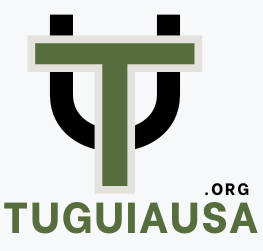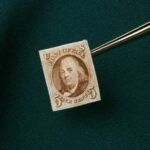In today’s fast-paced digital world, businesses are constantly seeking innovative ways to engage with their audience. One of the most powerful tools that have emerged in recent years is the QR code. Whether it’s used for contactless payments, website redirects, or promotional offers, QR codes have taken center stage as an essential marketing tool. In this article, we’ll explore how marketers can unlock the power of QR codes and why a QR code generator is a must-have for anyone serious about enhancing customer experience and driving engagement.
The Rise of QR Codes in Modern Marketing
QR codes, short for “Quick Response” codes, were initially used in the automotive industry for tracking parts during manufacturing. However, over the years, their use has expanded far beyond their original purpose. Today, QR codes have become a valuable asset in the marketing world due to their ability to quickly link users to digital content with just a scan.
As the world increasingly shifts to digital and contactless interactions, QR codes have gained significant traction in various sectors, especially marketing. From store promotions to event ticketing, QR codes provide an easy and effective way to engage with customers in a dynamic and interactive manner.
Marketers have recognized the potential of QR codes in driving customer engagement. By using a QR code generator, marketers can create custom codes that link to specific landing pages, product information, videos, or even social media channels. This opens the door for personalized marketing experiences and the ability to track user behavior in real-time.
How QR Codes Enhance Customer Engagement
The true power of QR codes lies in their ability to facilitate seamless and efficient customer interactions. As consumers increasingly prefer convenience, QR codes offer them an instant gateway to additional information, special offers, and services without needing to type in a website URL manually.
For instance, by scanning a QR code on a product label, a customer might be directed to an interactive video that demonstrates the product’s features. Similarly, a QR code on a restaurant menu could link to a digital ordering system, allowing customers to browse the menu, place an order, and make a payment – all from their mobile device.
These experiences enhance customer engagement by making interactions faster and more convenient. Moreover, QR codes enable marketers to create a more immersive experience by linking customers to multimedia content, including audio, video, and augmented reality (AR) experiences. In a world where attention spans are shorter than ever, providing customers with instant access to relevant content is a powerful way to capture their attention and build loyalty.
The Role of a QR Code Generator in Modern Marketing
A QR code generator is a tool that allows marketers to create unique QR codes tailored to their campaigns. These generators enable users to customize the appearance and functionality of the codes, ensuring that they align with the overall branding and objectives of the campaign.
Using a QR code generator, marketers can choose from different types of codes, such as static or dynamic. Static QR codes are fixed and cannot be modified after they’re created. While they are ideal for simple applications like linking to a website, dynamic QR codes offer greater flexibility. They can be edited or redirected even after being printed, making them ideal for campaigns that need to be updated frequently.
Another key benefit of dynamic QR codes is the ability to track user interactions. Marketers can analyze how many people scanned the code, when they did so, and what actions they took after the scan. This real-time data provides invaluable insights into customer behavior, helping marketers refine their strategies and optimize future campaigns.
Creating a Seamless User Experience
For a QR code to be effective, it must offer a smooth and seamless user experience. When a customer scans a code, they should be taken to a landing page that is mobile-friendly, easy to navigate, and relevant to the context in which the QR code was found. If the landing page is cluttered, difficult to navigate, or slow to load, the entire purpose of the QR code is undermined.
Marketers need to ensure that the content they link to is engaging and provides value to the customer. For example, a retail store might create a QR code that directs users to a special discount offer on their mobile app. By ensuring that the offer is enticing, easily redeemable, and clearly communicated, the brand can increase conversions and drive sales.
The beauty of QR codes is their ability to create a direct connection between offline and online marketing efforts. A QR code on a printed flyer, for instance, can take customers directly to an exclusive online offer, bridging the gap between physical and digital touchpoints. This ability to connect various marketing channels allows brands to create a more cohesive and integrated marketing strategy.
The Benefits of QR Codes for Marketing Campaigns
QR codes offer a wide range of benefits for marketers, making them an invaluable asset in any marketing campaign. Below are some of the key advantages:
- Trackable Data: QR codes allow marketers to track key metrics such as scan frequency, time of scan, and location data. This data can provide valuable insights into consumer behavior and preferences, helping to inform future marketing decisions.
- Cost-Effective: Creating and printing QR codes is relatively inexpensive compared to other forms of marketing, such as paid advertising or direct mail. Since QR codes can link to digital content, businesses can save on production and distribution costs.
- Increased Engagement: QR codes create interactive experiences that engage customers more deeply than traditional forms of marketing. By offering something of value (like discounts, exclusive content, or promotions), QR codes can motivate customers to interact with a brand.
- Contactless Interaction: In an age of heightened awareness about hygiene and safety, QR codes offer a safe, touch-free way for customers to interact with a brand, making them especially useful in sectors like retail, hospitality, and events.
- Brand Customization: With the right QR code generator, marketers can customize the look and feel of their QR codes to match their brand’s color scheme, logo, and style. This creates a cohesive visual identity that enhances brand recognition.
Leveraging QR Codes in Different Marketing Channels
QR codes are highly versatile and can be used across a variety of marketing channels. From print advertisements and packaging to digital ads and social media, QR codes can be incorporated into almost any marketing strategy. Here are some ways to leverage QR codes across different channels:
- Print Media: Including QR codes in print materials like flyers, posters, and brochures can direct customers to your website, social media profiles, or product landing pages. This is especially effective for in-store promotions or events.
- Social Media: Sharing QR codes on social media platforms can encourage followers to engage with your brand in new ways. For example, a restaurant might share a QR code on Instagram that links to an online menu or a special discount.
- Email Campaigns: QR codes can be embedded in email newsletters to encourage recipients to take immediate action, such as visiting a sale page, subscribing to a service, or downloading an app.
- Packaging: Placing QR codes on product packaging is a great way to engage customers post-purchase. You could link to how-to guides, maintenance instructions, or loyalty programs, providing added value to the consumer.
- Event Marketing: At events or trade shows, QR codes can be used to quickly share product information, collect contact details, or offer exclusive event discounts. This can increase participation and make the experience more interactive.
Conclusion: Unlocking the Full Potential of QR Codes
In conclusion, QR codes are no longer just a novelty; they’ve become a vital tool for marketers looking to connect with their audience in innovative and meaningful ways. By unlocking the power of QR codes and integrating them into marketing campaigns, businesses can offer a more engaging and personalized experience, bridge the gap between offline and online channels, and gather valuable insights through trackable data.
The key to maximizing the effectiveness of QR codes lies in using a QR code generator that offers customization options, flexibility, and analytics. With the right tools and strategy, marketers can unlock the full potential of QR codes, creating campaigns that not only capture attention but also drive meaningful results.
May Also Read: tuguiausa







